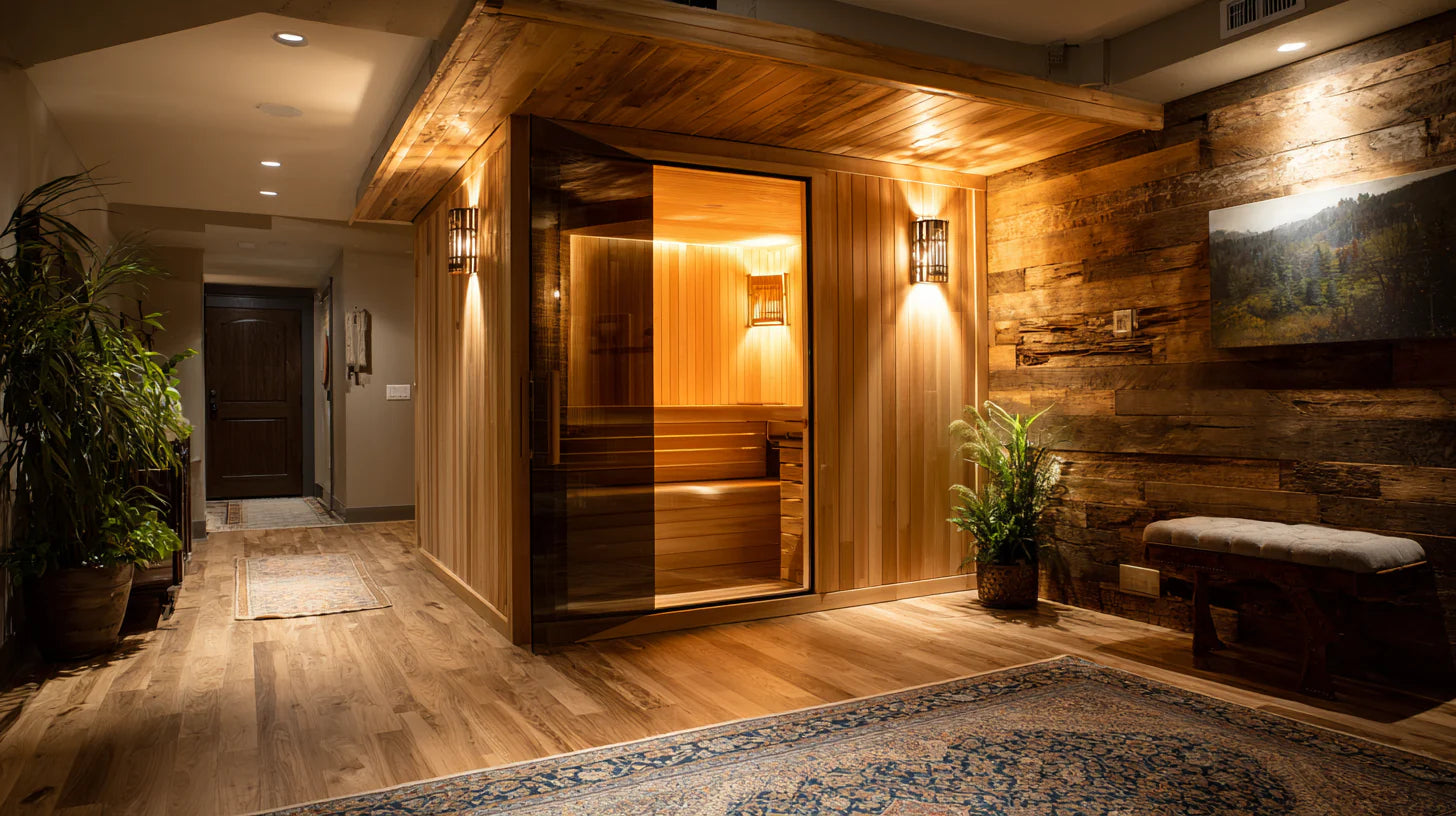Sauna bathing has been part of human culture for centuries. From the icy lakeside cabins of Finland to a private sauna tucked into a backyard, the art of learning how to work a sauna is more than simply heating a room. It is about creating a balance between heat, steam, airflow, and time, which together create a restorative and invigorating experience. Whether you are using a traditional sauna with a wood burning stove, exploring modern infrared saunas, or setting up an at home sauna, understanding the process will allow you to maximize the many health benefits while ensuring safety and comfort. This guide covers every step of sauna use, from preparing the heater and sauna rocks to enjoying a complete sauna session and cooling off with a cold shower or even a dip in a cold lake.
Understanding the Art of Sauna Use

The History and Philosophy of Sauna Culture
The traditional sauna has roots going back over 2,000 years, particularly in Finland, where it remains a cornerstone of community life. In its purest form, sauna bathing involves a simple structure heated by a stove and stones, producing intense heat and a dry atmosphere. Water is ladled over the sauna rocks to create steam, known as löyly, which increases the humidity and changes the feel of the heat on the skin. The philosophy is simple: raise the body temperature, open the pores, promote sweat, and then cool the body quickly, often in cold water or fresh air. Around the world, variations of the sauna experience have evolved, from Russian banyas to steam rooms in the Middle East. While infrared saunas have gained popularity for their convenience and lower operating temperatures, they lack the deep, enveloping heat of a wood-fired or dry sauna.
Why Learning How to Work a Sauna Matters
Knowing how to work a sauna properly elevates the entire sauna experience. It allows you to control sauna temperature, create steam at the right moments, and maintain a safe environment for all users. This knowledge also extends the life of your heater and stones, reduces wear and tear, and maximizes the health benefits of each sauna session. It also ensures that you avoid dehydration, keep your core temperature within safe limits, and make each visit both relaxing and invigorating.
Preparing Your Sauna for Use
Outdoor Placement and Setup
If you are setting up a portable or at home sauna, begin with the right placement. Choose a stable, level surface like concrete, grass, or unvarnished wood. Allow at least two feet of clearance from other structures, and avoid low-hanging branches to reduce fire risk. A private sauna in your backyard should have adequate ventilation so fresh air circulates freely. If you are using a wood burning stove, position the chimney away from obstructions.
Breaking in Your Furnace or Heater
For a wood-burning traditional sauna, the first step is to break in the furnace or heater before your first sauna session. Set it up outdoors, assemble the rock cage, rinse the sauna rocks to remove dust, and run the heater for at least two hours. This burns off manufacturing residues, allows the metal to settle into shape, and ensures the stones are ready to produce clean, high heat and steam.
Choosing the Right Wood and Stones
The choice of wood for a wood burning stove impacts the sauna experience. Use dry, seasoned hardwoods like birch or oak for longer, cleaner burns. Avoid resinous woods like pine, which create excess smoke. Sauna rocks should be dense and able to withstand high temperature fluctuations without cracking. Over time, stones break down and should be replaced every 1–2 years.
Step-by-Step: How to Use a Sauna
Step 1 – Starting the Fire or Heater
If you are using a wood-burning heater, empty the ash pan, place fine-split logs in the firebox, and light with kindling. Keep the air intake vent open for strong airflow. For electric or infrared saunas, simply set the desired sauna temperature and allow the sauna room to heat up.
Step 2 – Heating the Rocks and Sauna Room
For a traditional sauna, it takes about 45–60 minutes for the rocks and room to reach the optimal high temperature. The stones store heat, allowing you to create steam later. The upper bench will always be hotter than the lower bench, so seating choice affects the body temperature you will reach.
Step 3 – Regulating Temperature
The ideal sauna temperature for most users is between 150°F and 195°F. Adjust the vents on a wood stove to control airflow, which changes the heat intensity. On electric heaters, use the thermostat to maintain consistent high heat.
Step 4 – Creating Steam
Once the sauna rocks are hot, slowly ladle water over them to create steam. This raises humidity and changes the feel of the heat on your skin. Essential oils can be diluted in the water for aromatherapy, but avoid adding too much. Steam is a defining part of the traditional sauna ritual, distinct from the constant moisture of steam rooms.
Step 5 – Enjoying the Sauna Session
Sit or recline comfortably on your chosen bench. Beginners may prefer the lower bench for a milder experience, while experienced bathers enjoy the top bench for intense heat. Most people start with shorter sessions of 8–10 minutes and work up to 15–20 minutes per round. Use two towels, one to sit on and one to dry off afterward, and wear a bathing suit if sharing the sauna with others.
The Cooling Phase

After each round, leave the sauna room and cool the body rapidly. Traditional sauna bathing often involves plunging into a cold lake or taking a cold shower. Even a quick shower in cool water helps close the pores, lower core temperature, and refresh the mind. Step into fresh air between rounds to let the body reset before you re enter for the next session.
Safety and Best Practices
Sauna use should always be approached with care. Avoid dehydration by drinking water before and after each round, and drink plenty throughout your sauna routine. Coconut water or plain water are excellent choices for replenishing electrolytes. Never drink alcohol before or during sauna use, as it can impair judgment and increase the risk of overheating. People with health conditions such as high blood pressure should consult a doctor before using a sauna. If you feel dizzy, feel unwell, or have trouble cooling down, end your session. Shorter sessions are safer for beginners. Always wear shower shoes in public or shared steam rooms and saunas to protect your skin.
Common Mistakes to Avoid
Overloading the heater, using damp wood, or closing vents too early can reduce heat efficiency. Pouring water too quickly over rocks can cause splashing and burns. Skipping the break-in process for a new heater can shorten its lifespan. Regular sauna use should be balanced with adequate hydration and rest periods between rounds.
Advanced Tips for an Elevated Sauna Routine

Enhance your sauna experience by adding rituals like dry brushing the skin before entering, which removes dead skin cells and boosts blood flow. Alternate between high heat in the sauna and cold water immersion for maximum muscle recovery and circulation benefits. In winter, a cold lake plunge between rounds offers invigorating contrast. Bring two towels, stay hydrated, and create a playlist or lighting scheme to help you relax deeply.
Health Benefits of Sauna Bathing
Regular sauna use offers many health benefits, from improved blood flow and cardiovascular conditioning to muscle recovery after exercise. The intense heat raises core temperature, which prompts sweat that helps flush out impurities. Infrared saunas work differently, using light to warm the body directly with less ambient heat, but they can still aid in deep relaxation and circulation. Steam rooms are another option, with high humidity that benefits respiratory health, though they lack the dry heat of a traditional sauna.
Frequently Asked How to Work a Sauna Questions
How long should I heat a wood-burning sauna before use?
About 45–60 minutes until the air temperature and rocks are fully heated.
What is the ideal sauna temperature?
Between 150°F and 195°F, depending on personal preference.
Can I use essential oils in a sauna?
Yes, but always dilute in water before ladling water over the stones.
How often should I replace sauna rocks?
Every 1–2 years, or sooner if they crack.
What is the difference between steam rooms and saunas?
Steam rooms use constant moisture and lower temperatures, while saunas offer dry heat and optional bursts of steam.
Can I use a sauna without creating steam?
Yes, but creating steam adds to the traditional sauna experience.
Bringing It All Together
Learning how to work a sauna transforms it from a heated room into a ritual of health, relaxation, and rejuvenation. By mastering the process, from heating the rocks to timing your cool-downs, you unlock the full potential of each sauna session. Whether you prefer a traditional sauna with a wood burning stove, the convenience of infrared saunas, or the enveloping humidity of steam rooms, the principles remain the same: control heat, create steam, respect your body’s limits, and savor the balance of hot and cool. With the Kyfe Sauna, you can bring this authentic experience anywhere, from your backyard to a mountain lake, and enjoy a ritual that has served both body and spirit for generations.



How Much Does a Sauna Cost in 2025? A Comprehensive Guide for Every Lifestyle and Budget
Will a Sauna Help Acne? A Complete Guide to Clearer, Healthier Skin